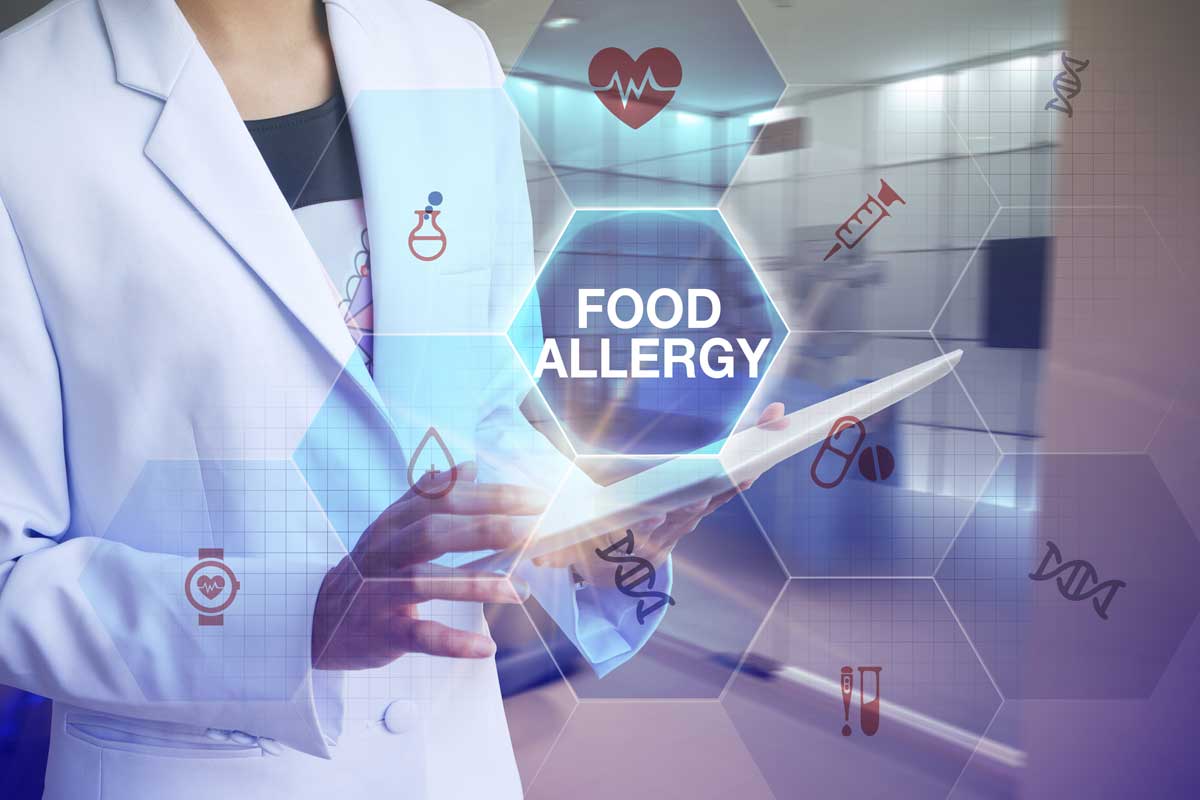Sniffing Out the Benefits of AI in Allergen Testing

Almost 33 million Americans have at least one food allergy, making this a growing public health concern1. Over 50% of adults have experienced a severe food reaction, and this percentage is only slightly reduced in children (40%)2. Even dangerous anaphylactic food reactions increased by 377% between 2007 and 20163.
“The Big 9” (milk, eggs, tree nuts, peanuts, wheat, soy, fish, shellfish, and sesame) are responsible for most allergic reactions and require higher levels of allergen labels and food safety measures. As more and more people are affected by increasingly severe allergic reactions, artificial intelligence (AI) enters the food manufacturing process to improve allergy detection accuracy, speed, and reliability.
Why AI and Allergen Testing
While it is most likely a multitude of factors causing the rise in allergies and food sensitivities, the result is increased medical costs, stricter food safety regulations, and an increased demand for allergy-free products. Human manufacturing protocols simply don’t keep up with the extreme level of sensitivity and speed needed to safely produce, test, and distribute safe food products to billions of people.
AI can identify the tiniest trace elements, analyze huge data sets at scale, predict contamination risks, and reduce the likelihood of damaging human error.
How AI Enhances Allergen Testing with More Accurate Detection
Through biosensors, infrared, imaging systems, and sophisticated tools like machine learning-based enzyme-linked immunosorbent assay (ELISA), AI improves the efficiency, reliability, and safety of food allergen testing systems, ensuring safer food production and safer human consumption.
Improved Sensitivity Detection for Food Allergens
AI systems can detect microscopic allergens that traditional testing methods might overlook. For example, with extreme peanut allergies, even the smallest amounts can cause a dangerous reaction. AI-enhanced biosensors can detect trace amounts of peanuts, even within other foods. AI bio scanners detect and prevent cross-contamination well below conventional detection levels. For extremely severe allergens, this level of sensitivity is potentially lifesaving.
However, another concern may be ensuring the integrity of the food data is not compromised by an outside variable. Embedded sensors and computer vision tech, for example, provide non-destructive methods for detecting allergies without contaminating the food.

Predictive Insights and Pattern Analysis
AI machine learning and algorithms will analyze large sets of data to proactively identify trends across allergen testing. For example, advanced algorithms could analyze patient data, manufacturing protocols, and environmental conditions to predict when cross-contamination might increase, allowing manufacturers to increase quality assurance. As food producers share these insights, safety and production will improve across the board.
Increased Consumer Safety
The real winners of this improved AI-based allergen technology are the consumers, as the higher sensitivity levels, more accurate detection, and shared predictive indicators will ensure their safety. Food manufacturers can feel more confident that their food is labeled correctly and lacking any cross-contamination, that may harm the public.
Real-World Companies Leveraging AI in Allergen Testing
For decades, the most innovative companies have adopted AI in food sensitivity and allergen testing, and now, real-world companies are putting these into practice. Clear Labs uses next-generation genomics and data analytics to detect small food samples with high precision4. It uses advanced genetic sequencing to reduce the risk of allergen exposure and improve food safety from pathogens like salmonella, listeria, and contamination.
A global leader in life sciences, Agilent acquired an artificial intelligence technology company to automate the labor-intensive task of gas chromatography/mass spectrometry data analysis to improve food testing5.
The Future of AI in Allergen Testing
With food allergies increasing by 50% from 2007 to 2021, this critical public health concern is expected to continue growing exponentially6. As AI in allergen testing in the global market hits $0.84 billion in 2024, it’s expected to grow to $1.27 billion by 20297.
Networks and computer processing will become more comfortable with large amounts of data, improving processing power and speed for allergen testing. At the same time, more efficient algorithms will provide more detailed and insightful potential contamination trends. Plus, AI is poised to meet the food supply needs of the growing global population amidst concerns about reducing food waste.
Due to changes in environmental conditions, human microbiome, and more, people are more likely to continue developing moderate to severe allergic reactions. However, AI is sometimes criticized for not offering long-term, statistically significant research, so manufacturers and food producers are less likely to adopt proven technology. Food regulatory safety compliances are also strict, and AI needs to be properly regulated and introduced to meet industry standards.
However, even with privacy, processing, and security challenges, AI stands to improve food production standards and positively impact public health safety.
How Ambiq Contributes
Fundamental to these AI-based allergen detection systems are embedded components used to run this complex analysis. A food processing facility can streamline their examination process with small edge computing-based sensors spread throughout its site at several key points of inspection.
Ambiq develops a range of low power system-on-chip (SoC) and microcontrollers (MCU) that enable edge AI for sensors like these providing a high performing and energy efficient solution for allergen detection technology. Visit Ambiq’s applications page for more use cases.
Sources:
1 Facts and Statistics, 2024
2 Facts and Statistics, 2024
3 Facts and Statistics, 2024
4 Clearlabs, 2024
5 Agilent Acquires Artificial Intelligence Technology to Enhance Lab Productivity, February 17, 2022
7 Food Allergen Testing Market Size & Share Analysis – Growth Trends & Forecasts (2024 – 2029), 2024

